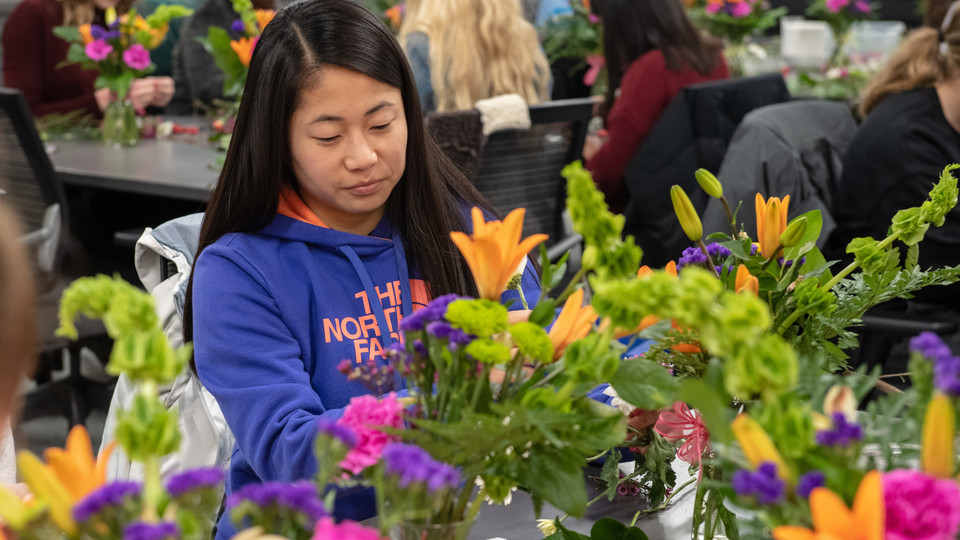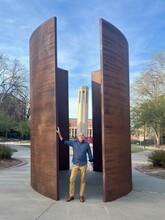· 4 min read
Floral design class a bouquet of art and science

Similar to an ornate floral masterpiece, there are many facets to the Floral Design class at the University of Nebraska–Lincoln.
Along with learning how to turn stems of roses, bunches of lilies, and spatters of greenery into art, Huskers are getting a sprig of history, a sprinkle of entrepreneurship and a spray of supply chain management.
During the spring semester, students gather each Tuesday in Plant Sciences Hall to try their artistic hand at creating arrangements such as corsages, bouquets and topiaries. Between these weekly design labs, they complete online coursework learning about plant species, design concepts, origins of plant traditions and more.
Nearly 180 students from a variety of academic programs take the course each year. To accommodate the academic needs of the students, Stacy Adams, associate professor of practice in agronomy and horticulture, built the class to encompass as many elements as time allows.
“They do at least 14 different designs over the course of the semester,” Adams said. “But they also have to understand the complexity of floral design and why flowers have symbolism and importance.
“I also teach the science of it, because these plants are living materials and we want to make them last as long as possible. They learn about the production, how they’re grown, processed, shipped, delivered and handled so that ultimately, the consumer gets to have the experience.”
The class starts with design fundamentals, followed by an abridged dive into world history. Along the way, Adams touches on the significance of floral art to ancient Egyptians, the Roman Empire, Greeks, Elizabethan and King George eras, as well as Asian design influences and early Americana.
“We come right into modern design, which is an eclectic mix of all of these,” Adams said.
Near the midpoint of the semester, students begin an event storyboarding project, where they’ll choose a theme and develop a floral design plan around it.
“We also get into the business side of it,” he said. “If you want to get into events or become a freelance designer or work as a florist, what does that look like?”
Everything the students learned and created is compiled in their final digital portfolio project. Adams said students have used the portfolios to get part-time jobs at local florists or to advance careers after graduation.
“I’ve had students find their niche and become florists and entrepreneurs themselves,” Adams said.
For Megan Capps, a junior agriculture education major from Loma, Colorado, the skills she’s learned will likely be useful when she begins teaching.
“I did some floral arrangements for high school events through FFA, and I think I’ll definitely be helping my students do events in the future, where this will be really useful,” she said.
Overall, students in the class come away with a hardier appreciation for the art and plant science, Adams said.
Violette Al-Timimi, a senior from Lincoln majoring in finance and Spanish, agreed. She didn’t consider herself a green thumb, but took the course as an elective on the advice of a sorority sister.
“I’ve never really thought about flowers as an addition to a space,” she said. “I’m really keen to them now and I want to grow flowers and incorporate flowers into my house. I really like the artistic expression and how it affects the emotions. I have an appreciation that I didn’t have prior.”









